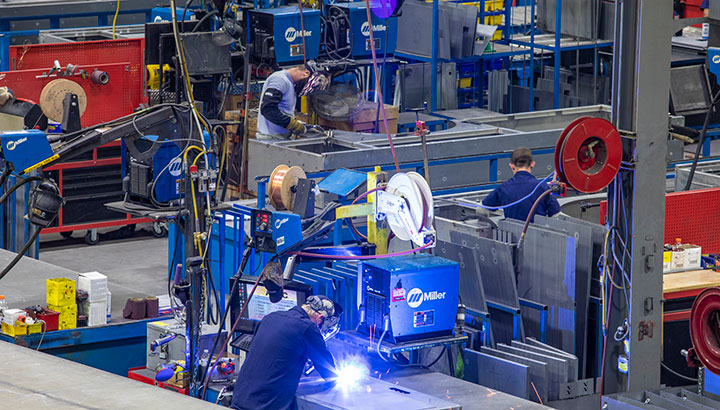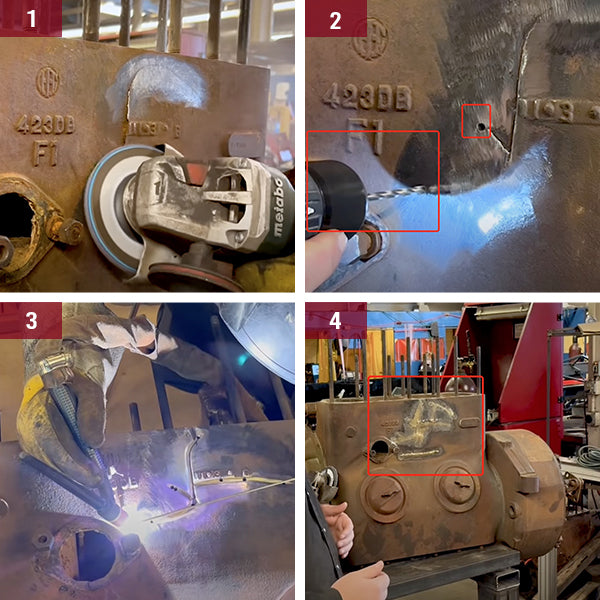Key methods to deal with warping in Montana Mobile Welding and Repair Belgrade
Wiki Article
All About Welding: Secret Insights Into Techniques and Finest Practices for Success
Welding incorporates a selection of techniques, each fit for specific products and applications. Comprehending these methods, such as GMAW, SMAW, and TIG, is necessary for accomplishing excellent outcomes. Furthermore, the right tools and safety and security techniques can not be forgotten. As prep work and repairing play important functions in the welding procedure, mastering these components can significantly enhance the high quality of the end product. What are the key elements that ensure an effective weld?Comprehending Various Welding Strategies
Welding strategies encompass a range of techniques, each fit to particular applications and products. Among the most common methods are Gas Metal Arc Welding (GMAW), Shielded Steel Arc Welding (SMAW), and Tungsten Inert Gas Welding (TIG) GMAW, also referred to as MIG welding, is preferred for its rate and versatility, making it ideal for thin products. SMAW, or stick welding, is preferred for its simplicity and performance in outside environments, specifically with thicker metals. TIG welding uses precision and control, making it ideal for intricate job and non-ferrous metals (Belgrade Welding). Each method has its unique benefits and factors to consider, permitting welders to choose the best approach based upon the project's needs, material type, and wanted end results. Understanding these methods is crucial for successful weldingEssential Welding Devices and Tools
While numerous welding methods call for particular abilities, the best equipment and devices are just as crucial for accomplishing quality outcomes. Essential welding equipment includes welding makers, which differ depending on the technique-- such as MIG, TIG, or stick welding. Protective gear, consisting of safety helmets, gloves, and aprons, guarantees safety and security and convenience throughout the process. On top of that, clamps and fixtures aid safeguard products in position, ensuring precision in welds. Consumables like welding rods, wire, and securing gas are likewise critical parts that influence the high quality of the weld. Tools such as cutters and mills assist in surface prep work and post-weld ending up, adding to a professional outcome. Spending in top quality equipment ultimately boosts the performance and performance of welding jobs.Security Practices in Welding
Appropriate security methods are vital in the welding market to safeguard employees from prospective risks. Welders must wear appropriate individual protective equipment (PPE), including headgears with proper shading, handwear covers, and flame-resistant clothes. Adequate air flow is important to reduce direct exposure to dangerous fumes and gases produced during the welding procedure. Furthermore, workers ought to be learnt the right handling of welding tools to avoid crashes. Fire precaution, such as keeping combustible products away from the welding location and having fire extinguishers readily offered, are required. Routine examinations of devices and workspaces can aid determine potential risks prior to they result in crashes. By adhering to these safety and security methods, welders can create a safer working setting and decrease risks linked with their profession.Preparing Materials for Welding
Preparing materials for welding is an important step that substantially affects the quality and stability of the end product (Montana Mobile Welding and Repair Belgrade Fabrication). Correct prep work includes cleaning up the surfaces to get rid of pollutants such as oil, rust, and dust, which can jeopardize the weld. Strategies such as grinding, fining sand, or making use of solvents are typically utilized to accomplish a clean surface. Furthermore, ensuring that the materials mesh comfortably is crucial; gaps can lead to weak welds. It's additionally important to consider the alignment and positioning of the components, as this will certainly influence the convenience of welding and the last result. Choosing the suitable filler product and guaranteeing compatibility with the base metals is essential for achieving solid, resilient welds.Tips for Getting High-Quality Welds
Attaining top notch welds calls for focus to detail and adherence to finest techniques throughout the welding process. Correct joint preparation is essential, making certain surface areas are tidy and complimentary from pollutants. Selecting the proper filler product and welding method based upon the base steels is important for optimal bonding. Maintaining regular traveling speed and angle while welding can advertise and avoid issues harmony. In addition, controlling warm input is necessary; extreme warm can lead to warping and weakened joints. If necessary, routinely checking the welds throughout the procedure permits for immediate changes. Finally, employing suitable post-weld treatments, such as cleansing and stress alleviation, can boost the resilience and integrity of the weld, ultimately making sure an effective result.Repairing Common Welding Issues
Welding frequently offers challenges that can impact the quality and stability of the final item. Usual concerns such as porosity, inconsistent weld beads, and overheating can develop, each calling for certain repairing methods. Recognizing these issues is essential for welders to boost their abilities and achieve suitable results.Porosity Troubles Explained
Although porosity can frequently be ignored, it remains a crucial issue in welding that can compromise the stability of a finished item. Porosity describes the visibility of little gas pockets within the weld bead, which can compromise the joint and lead to early failing. This issue usually emerges from pollutants, dampness, or improper securing gas protection throughout the welding procedure. To mitigate porosity, welders must confirm that the base materials are completely dry and tidy, make use of ideal shielding gases, and keep constant welding parameters. On a regular basis evaluating the devices and environment can additionally assist identify prospective concerns before they materialize in the weld. Attending to porosity effectively is crucial for accomplishing solid, long lasting welds that meet top quality criteria.
Irregular Weld Beans
Irregular weld grains can substantially influence the quality and toughness of a completed product. Different elements add to this problem, including inappropriate travel rate, incorrect amperage rf welding settings, and irregular electrode angles. When the welder relocates too promptly, a grain may appear narrow and do not have penetration, while relocating as well slowly can cause extreme accumulation. In addition, using the incorrect amperage can cause either damaging or too much spatter, both of which compromise weld stability. The welder's method, such as inconsistent lantern activity, can additionally lead to irregular bead appearance. To alleviate these troubles, welders should concentrate on preserving stable, controlled movements and guaranteeing proper equipment setups to achieve uniformity in their welds. Uniformity is crucial to attaining reliable and strong welds.Overheating and Bending Issues
Excessive warmth throughout the welding process can cause significant overheating and warping problems, impacting the structural integrity of the work surface. These problems usually manifest as distortion, which can compromise placement and fit-up, making further assembly testing. Factors adding to overheating include the choice of welding specifications, such as voltage and take a trip rate, as well as the kind of product being welded. To alleviate these issues, welders need to maintain constant traveling speed and ideal warm input while keeping track of the work surface temperature level. Furthermore, preheating or post-weld heat treatment can aid ease tensions brought on by fast air conditioning - Belgrade Welding. Routine inspection and adherence to best practices are crucial in protecting against getting too hot and making sure the durability and integrity of bonded structuresFrequently Asked Questions
What Are the Career Opportunities in the Welding Industry?
The welding market provides diverse occupation opportunities, including additional reading positions as welders, designers, assessors, and educators. Experts can function in manufacturing, building, aerospace, and automotive markets, benefiting from solid demand and competitive salaries in numerous duties.Exactly How Can I Enhance My Welding Speed Without Compromising Quality?
To enhance welding rate without giving up quality, one need to practice efficient strategies, preserve equipment, maximize settings, and boost hand-eye control. Normal training and seeking responses can also considerably add to achieving faster, high-quality welds.What Certifications Are Offered for Welders?
Countless qualifications exist for welders, including those from the American Welding Society (AWS), the National Facility for Building And Construction Education and Research Study (NCCER), and numerous industry-specific organizations. These qualifications boost employability and show skill proficiency.Just How Does Welding Influence the Residences of Metals?
Welding influences the residential or commercial properties of metals by changing their microstructure, which can bring about adjustments in ductility, firmness, and stamina. Warm input and air conditioning rates throughout the procedure considerably influence these material qualities.Can I Bonded Dissimilar Metals Together?

Report this wiki page